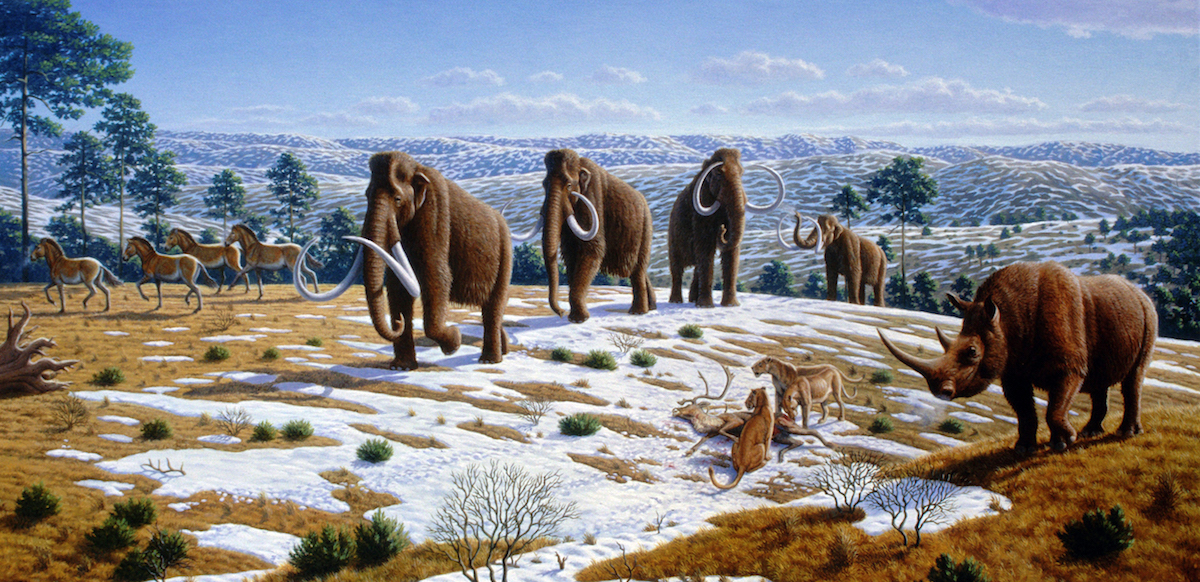Extinct Animals to Walk Again: Clones of Tigers, Bison, Deer To Join Woolly Mammoths

Sometimes I think about how nice it would be to be thrown (umm, maybe, placed gently) back in time to an age where the world is clean and covered in forests, with an abundance of natural resources, and no fences or ‘Trespassers will be shot, then mauled by the rabid donkeys’ signs to put you off walking that 100 yards that saves you 4 miles in walking around… yeah, I know, I’ve got issues!
Anyway, One of the guys here at Outdoor revival HQ put this in front of me, and I thought it was sort of cool, we all know this isn’t us going back in time rather than bringing them into our time… Ha ha, Dr Who would love this….
Across the world, there seems to be a race going on. It is a slow race, but a race nevertheless, with the winner the first to clone a mammoth!
Although not just mammoths, scientists are hoping to clone the ancient bison, dogs, deer, and tigers that used to roam across the wilds of Siberia so long ago.

The controversial Dr. Hwang Woo Suk is one of the scientists trying to turn back the clock. The mammoth restoration project is a long term project, to be sure, but the 63-year-old scientist is hoping to see a live mammoth in his lifetime.
It is an undeniably challenging project, and the scientist says he and his colleagues are doing their best. They certainly have plenty of mammoth remains to work with, as the melting permafrost is uncovering more every year.
One of the interesting facts of cloning is that you need living tissue; the mammoth remains do not have this. However, scientists can insert mammoth genes into living elephant cells to begin the process of cross-species cloning.
He would like to see these ancient mammoths return to places such as the Pleistocene Park, which is a unique Arctic scientific zone near Chersky. The park was established in 1977 and has been slowly seeing the return of the mammoth steppe ecosystem.
It is only 16 square kilometers wide and is fully enclosed. Reintroduction of animal species only started in 1988. They are replacing the current unproductive ecosystem with high-producing pastures.

The area is already home to bison, musk ox, moose, reindeer, and horses. It is hoped that restoring the pastures will slow down the rate of permafrost melt and in turn stop more methane and carbon dioxide from being released.
The theory behind this has to do with heat absorption and heat reflection. Trees are dark, and grass is light. The lighter the surface, the more heat is reflected back into space. Having the area seeded with herbivores means that the grasslands are maintained, so they will stop the trees from encroaching.
Even though the air may be -40 degree Celsius, the ground under that insulating snow may be only -5 degrees Celsius. The animals will keep the snow trampled down and the soil temperatures cold. It is hopeful that the success of the park will mean a bigger park one day. It may not stop global warming, of course, but hopefully, it can help reduce permafrost gas emissions. It all adds up.
So, it might be that in a few years we’re booking trips to see the long lost animals of a bygone era and who knows, maybe our children or grandchildren will grow up with them being a normal part of life.
If you have any comments then please drop us a message on our Outdoor Revival facebook page
If you have a good story to tell or blog let us know about it on our FB page, we’re also happy for article or review submissions, we’d love to hear from you.
We live in a beautiful world, get out there and enjoy it.
Outdoor Revival – Reconnecting us all with the Outdoor
